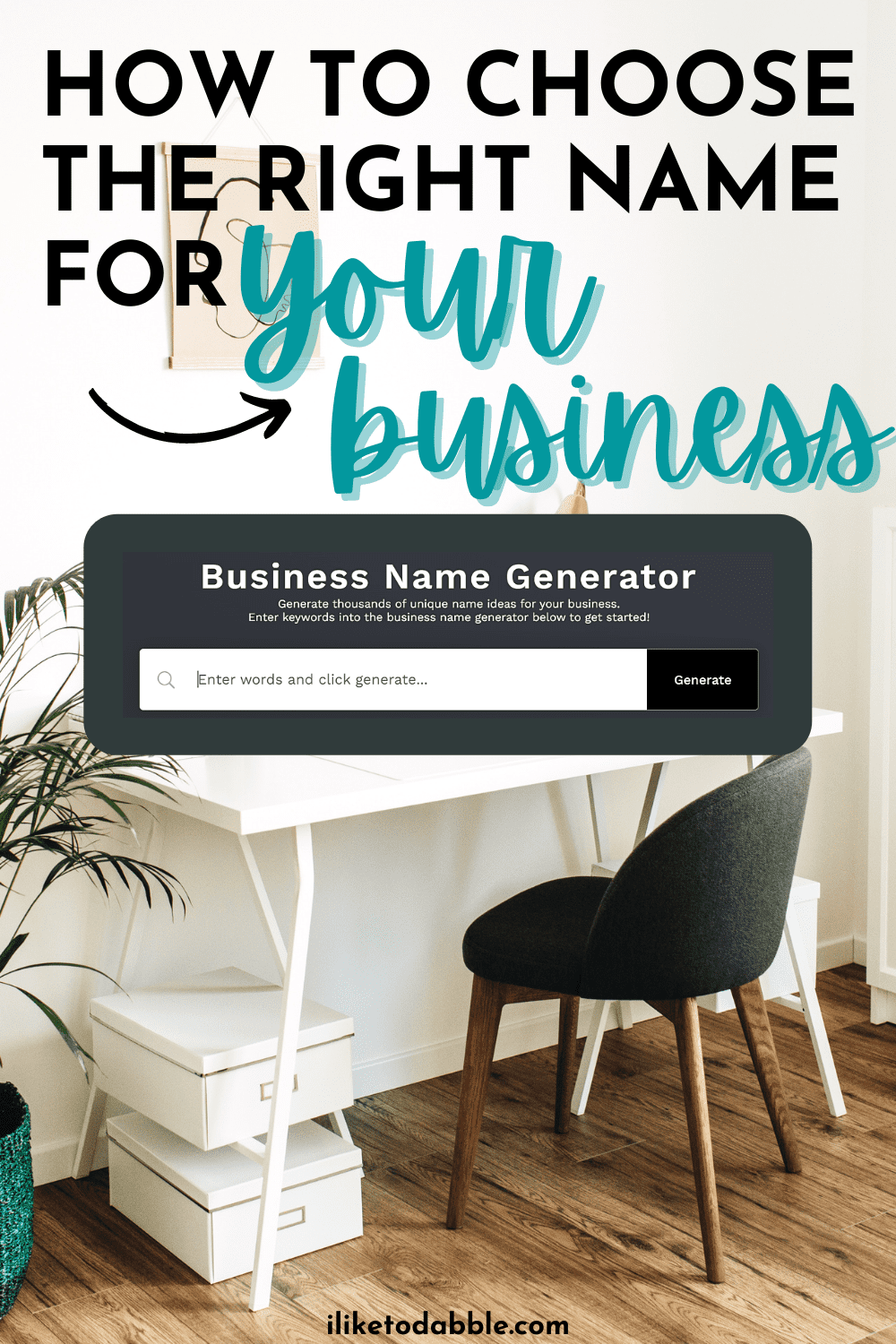Our website is supported by our users and contains affiliate links. We get paid when you purchase or sign up for anything through those links. Read the full disclaimer for more information.
Last Updated on December 22, 2021 by Daniella
This article originally appeared on the QuickBooks Resource Center and was syndicated by MediaFeed.org.
What’s in a name? Well, quite a lot, actually.
Most entrepreneurs will tell you that picking the perfect business name is like naming your first child. You’re going to want the name to feel right, like a part of your business baby’s identity. After all, you’ll have to say it, print it, write it, and preach it until it’s at least 18. (Kidding, though 18 years of business is definitely a good goal.)
There can be a lot of pressure and hand-wringing when it comes to landing on the perfect name for your business. Take some comfort in the fact that you have a little bit of flexibility. You can change your business name later or file for a trade name (often called a “doing business as” or “DBA”) if you need to.
That being said, finding the right fit from the start is rewarding, and it can save you a lot of headaches and administrative nightmares later.
Unfortunately, they don’t make baby name books for small businesses, but that’s why we wrote this for you. Consider this your complete guide to exploring your options and finding the perfect name for your brand-new company.
Table of Contents
3 steps for choosing a business name
Business names are typically between only one and four words, but you still want them to say something about what you’re all about.
Think of companies like Amazon, Nike, Apple, or Zoom. Their business names may only be one word, but combined with a great brand, those common words are a full identity.
Take a deep breath—most small business owners will be rightfully intimidated at the prospect of filling Amazon’s or Apple’s shoes. Fortunately, that isn’t necessary. They’re simply examples of how much power lies in a great name.
Ready to land on your own moniker for your new business?
Step #1: Brainstorming
There’s nothing like a good old-fashioned brainstorm. Truth is, you’ll need to come up with a lot of name ideas before you land on a company name that feels right. Trust the process.
Ideally, a good business name will be:
- Memorable: You want your business name to stick for your target audience.
- Easy to pronounce: You don’t want your customers to go cross-eyed trying to figure out how to talk about your business to other people.
- Unique: Generic names can be appealing because they often check the “memorable” and “easy to pronounce” boxes. But ultimately, your business name should be as unique as your business itself.
- Representative of your brand: Your brand identity carries a lot of weight here, so make sure you think about what sort of image you want your name to portray. For example, if you’re opening an upscale brunch restaurant, a name like The Waffle Wagon probably doesn’t match your desired aesthetic.
Now that you know what criteria you’re working toward, start by reflecting on some questions and jot your answers down on your notepad. These questions include:
- Where were you when you were struck with the inspiration to start your business?
- What are some people, places, or things that are meaningful to you and your business?
- Is there a certain person who inspired you to start your business?
- What are some things you want your business to be known for?
- What pain points do you solve for your target customers?
Those will get the creative juices flowing and help you start piecing some names together. But, if you’re still feeling stuck, you can turn to an online business name generator to get your wheels turning. A few popular ones are:
Most name generators require that you enter a keyword or two that you want your business to include. That’s why it’s smart to begin with those reflection questions to get a few starting points.
Step #2: Searching
You’ve spent the time brainstorming and you’ve come up with one—or maybe even a few—potential names for your new business.
Next you’ll need to do a bit more legwork to ensure that name is free and clear for you to use without any extra headaches or hassles. Here are a few sites you should visit to check the availability of your desired business name:
- Secretary of state: Most secretary of state offices have a business search function online. There you can type in a business name and see if a business structure with that name is already registered in your state. Using a duplicate name might not only violate trademarks (which we’ll get to next), but it can also cause a lot of confusion for customers.
- Trademark database: Business names can be trademarked and, if you violate that, you could face a lawsuit. So avoid hot water by doing your due diligence up front. The U.S. Patent and Trademark Office maintains a database where you can search trademarks and see if your desired business name comes up.
- Domain names: There’s nothing worse than landing on the perfect business name only to discover that there aren’t any relevant and available domain names. Start by typing the URL you’d use for your business name into the address bar of your browser. If nothing comes up, it could be available. But you should still visit a domain name registrar (like Google Domains or GoDaddy) to search for your domain name. Make sure it’s actually available and isn’t a completely unreasonable price.
- Social media: Turn to social media to make sure the handles you’d want to use with that business name are available. This might sound like a trivial step, but you want your social media handles to be close to your business name. That way, people can easily find you, tag you, and more.
- Google search: Finally, it’s worth doing a straightforward search for your business name to see what comes up. You’d hate for the name you choose to be affiliated with something inappropriate without your knowledge.
Do you have a business name that you feel good about and passed all of these tests? Let’s move on to the final step.
Step #3: Questioning
Remember, naming your business is a big decision, and it’s smart to do a gut check. This will help you narrow your choices or confirm that the one name you landed on is the one you actually want to stick with.
Start on your own by saying the business names you came up with aloud. In fact, say them over and over again. Do you still like them? Can you picture them on business cards? Or on company swag? Or on a website?
Keep in mind that you don’t have to go through this process alone. It’s wise to ask friends, family, industry peers, or other trusted confidants their opinions on the business name or names you’ve come up with. That might reveal a clear winner among your final choices.
Ultimately, choosing a name for your startup is up to you—it’s your business. But it doesn’t hurt to solicit feedback and get different perspectives.
The right business name is out there—you just need to find it
Some small business owners are lucky enough to immediately know what to name their company. But others are left wrestling with the decision.
If you fall into the second camp, rest assured that there’s a better way to find a business name than throwing a dart at a board. (Although you never know. It could work!) Spend a little time brainstorming and workshopping, and you’ll land on a name that’s memorable, available, and does your new business justice.
Related:
- How to choose the best payment method for small businesses
- Business owners say you should outsource these 3 tasks
- 8 Business Grants for Side Hustlers & Sidepreneurs
This article originally appeared on the QuickBooks Resource Center and was syndicated by MediaFeed.org.
Pin it for later!


Daniella is the creator and author of iliketodabble.com. When their wife Alexandra and them aren’t globetrotting or playing with their 7+ animals, they are dabbling and working towards a future of financial freedom.

